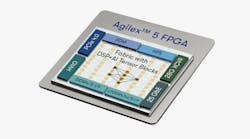In case you haven’t noticed, automotive electrical systems are undergoing a significant change from the old 12-V systems to a new hybrid 12- and 48-V system. The number of new electrical and electronic devices and subsystems added to new vehicles over the years has significantly increased the electrical load on the old, reliable lead-acid 12-V battery. And the breaking point has arrived.
In addition, hybrid electrical vehicles (HEVs) and full electrical vehicles (EVs) are gradually gaining acceptance. HEV/EVs need an even more aggressive electrical system. This article explores the new systems that more adequately deal with the modern electronic needs of the modern automobile.
The Emerging 12/48-V Dual-Battery Electrical Systems
The end is near for the long-lived 12-V electrical system in vehicles. First appearing in 1955, the 12-V system replaced older 6-V systems. Now, 60+ years later, that system has reached its limits. With the continuous inclusion of new electronic systems over the years, the total electrical demands in a car’s traditional 12-V electrical system exceed its capability. For example, at low temperatures, the static-load components can account for all of the power generated by the alternator. And more new loads are still to come.
The solution to this problem has been known for years. In the early 2000s, a 36/42-V system was proposed though never adopted. Getting the whole auto industry to adopt a new system isn’t easy, but now there’s no choice. A dual 12- and 48-V system is the solution. The strategy being employed by automakers is to move power-hungry vehicle components and subsystems to a new 48-V rail powered by a lithium-ion battery.








